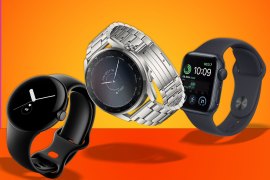Samsung Galaxy A55 vs A35: what’s the difference?
Samsung's two newest mid-range models look very similar - but there are some key contrasts
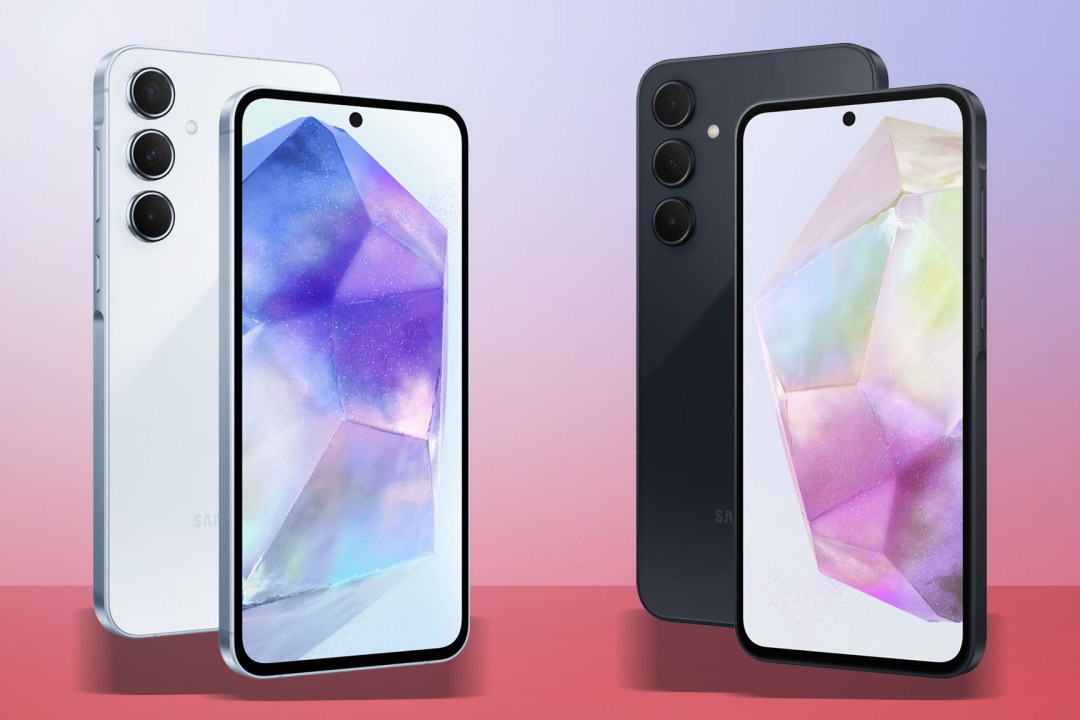
The Galaxy A-series lineup has long been a best-seller for Samsung. No surprises as to why: these mid-range phone options borrow heavily from the top-tier Galaxy S series, with matching designs, similar screens and cameras that are almost as capable. Only at a much lower price point. That’s the case for the freshly launched Galaxy A55 and A35.
On paper, the two affordable heroes have a lot in common. With just a few hardware differences to separate them, is one really worth spending that much more on than the other? Having now fully reviewed the Galaxy A55 and poring over spec sheets, I’ve got a good idea already which one is better deserving of your cash.
Design & display: material gains
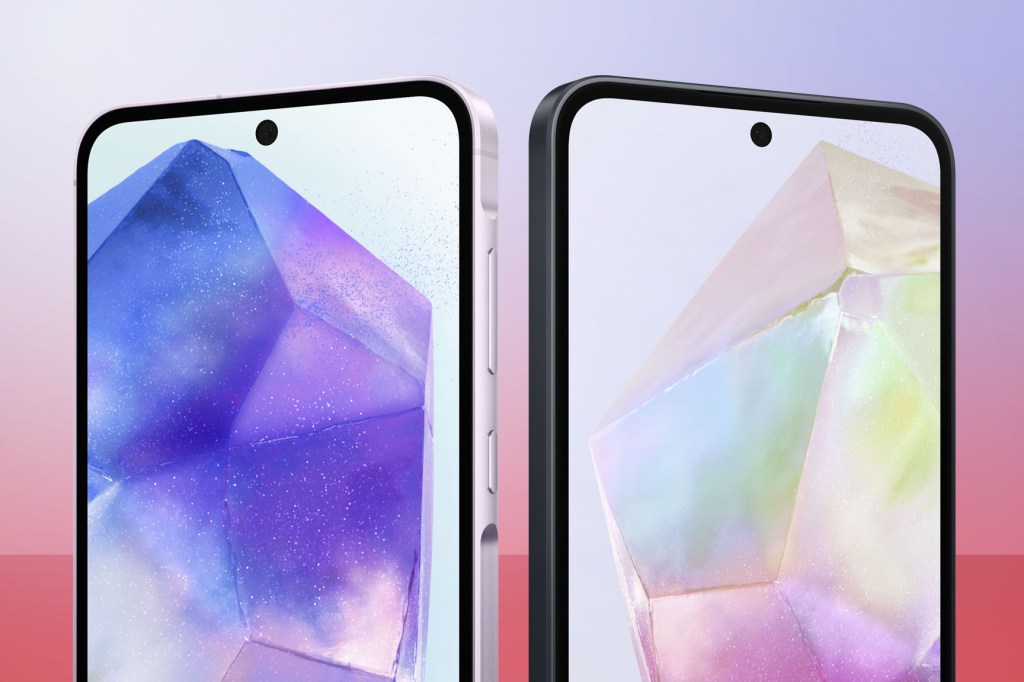
Style-wise it is practically a dead heat. Both the Galaxy A55 and Galaxy A35 get Samsung’s ‘Key Island’ design, with neatly rounded corners, a flat screen with punch-hole camera and symmetrical bezels, and a trio of bare camera lenses at the rear. Each can be had in a bunch of pastel-themed colours, including Awesome Ice Blue, Awesome Lemon, Awesome Lilac and Awesome Navy.
The biggest difference is the central frame, which is made from polycarbonate plastic for the Galaxy A35. The Galaxy A55 gets upgraded to metal, which makes it feel a lot more like a higher-end device in your hand. It also has a glass rear. Both phones have fingerprint readers built into their power buttons at the side.
Each phone has a 6.6in AMOLED display with a 1080p resolution and 120Hz refresh rate. That’s comfortably on par with the rest of the mid-range Android world. Size-wise they’re a closer match to the 6.7in Galaxy S24 Plus than the 6.2in Galaxy S24. They’re a long way off those flagships on display brightness, though.
Expect excellent contrast and punchy, vibrant colours, as has been the Samsung approach for what feels like forever.
Performance and battery: power by the hour
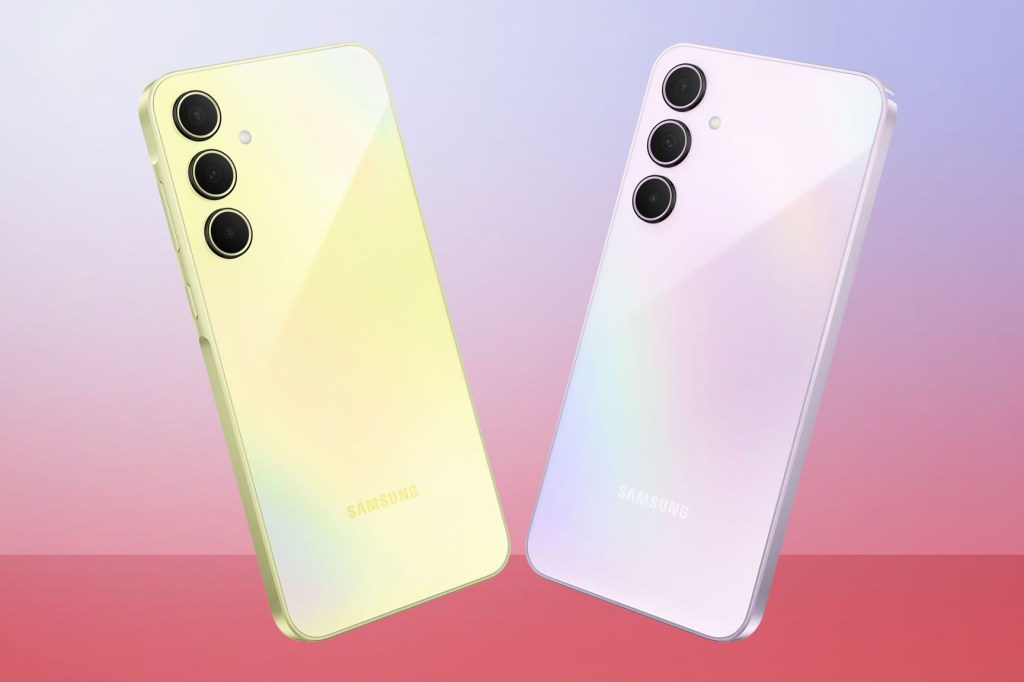
Both the Galaxy A55 and Galaxy A35 find room for a 5000mAh battery, which is very generous in an affordable phone. Samsung says each should be capable of two days of use between charges, and that’s mostly true in the case of the A55. Expect 25W wired charging, but only if you supply a beefy enough power brick; Samsung doesn’t include one in the box any more. Wireless charging doesn’t make the cut in either model.
Each phone can be had in a few different memory and storage configurations; 6 or 8GB and 128 or 256GB for the Galaxy A35, and 8 or 12GB and 128 or 256GB for the Galaxy A55. I’d say 8GB is the minimum on a modern Android phone, while 128GB is probably plenty of space for most mainstream users. At full retail price I think the base level A55 makes the most sense here. Just remember these are some of Samsung’s only phones left that still support microSD cards, so you can add extra storage later down the line for next to nothing.
The Galaxy A55 also has a more modern CPU. It’s powered by an Exynos 1480, whose eight cores deliver about 15% more processing oomph than the previous-gen chip. The GPU goes even harder, with a 32% uplift that give it the edge in games. Things take a step down for the Galaxy A35, which uses the older Exynos 1380. It was perfectly punchy on the outgoing Galaxy A54, but I’m not sure how well it’ll hold up several years from now. If you’re buying for the long haul, always get the most powerful chip you can.
Cameras: pixel count
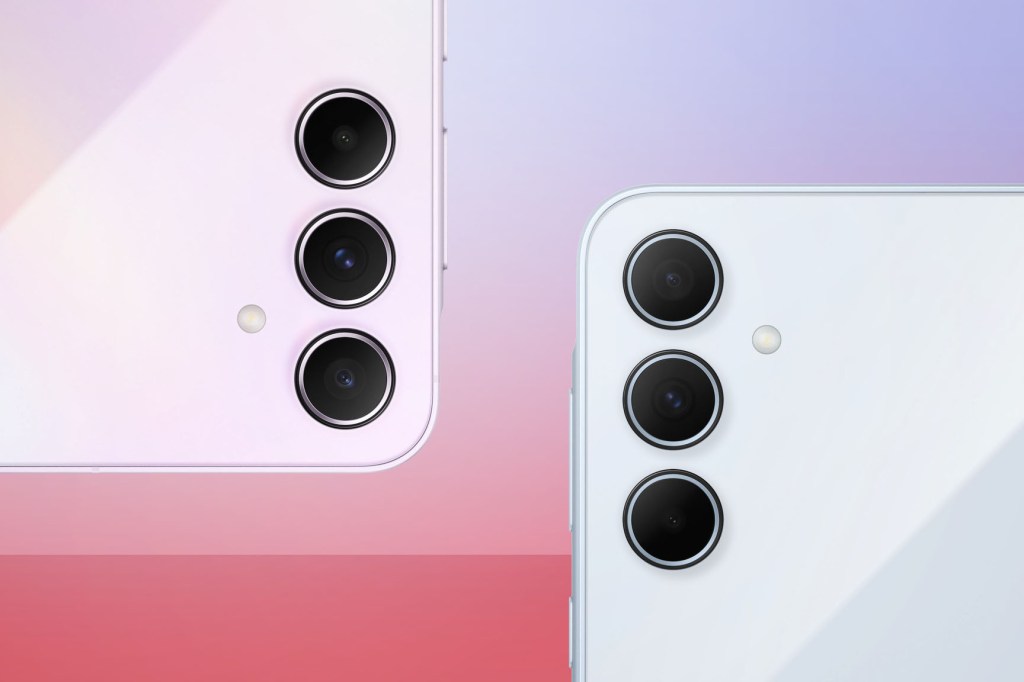
There’s not a lot to separate the two phones here. Both have a 50MP, f1.8 main camera with phase-detect autofocus and optical image stabilisation. They also get a 5MP, f/2.4 macro lens for close-ups; I’ve never really been blown away by these, and would’ve preferred a telephoto zoom – or no third lens at all.
The Galaxy A55 has a more capable ultrawide camera, at least on paper. It uses a 12MP, f/2.2 setup, while the Galaxy A35 has an 8MP sensor. Up front, the Galaxy A55 has a 32MP selfie cam, while the Galaxy A35 makes do with a 13MP unit.
Without testing both phones side-by-side it’s tough to say what a difference those sensors will make to overall image quality. I doubt there’ll be an awful lot in it, as we’re talking about mid-range handsets here. Expect decent results in good light, with less impressive shots at night unless you stick to the lead lens. Samsung’s image processing is more of a given, with very (some would say excessively) vibrant colours and heavy use of HDR.
Samsung Galaxy A55 vs A35 initial verdict
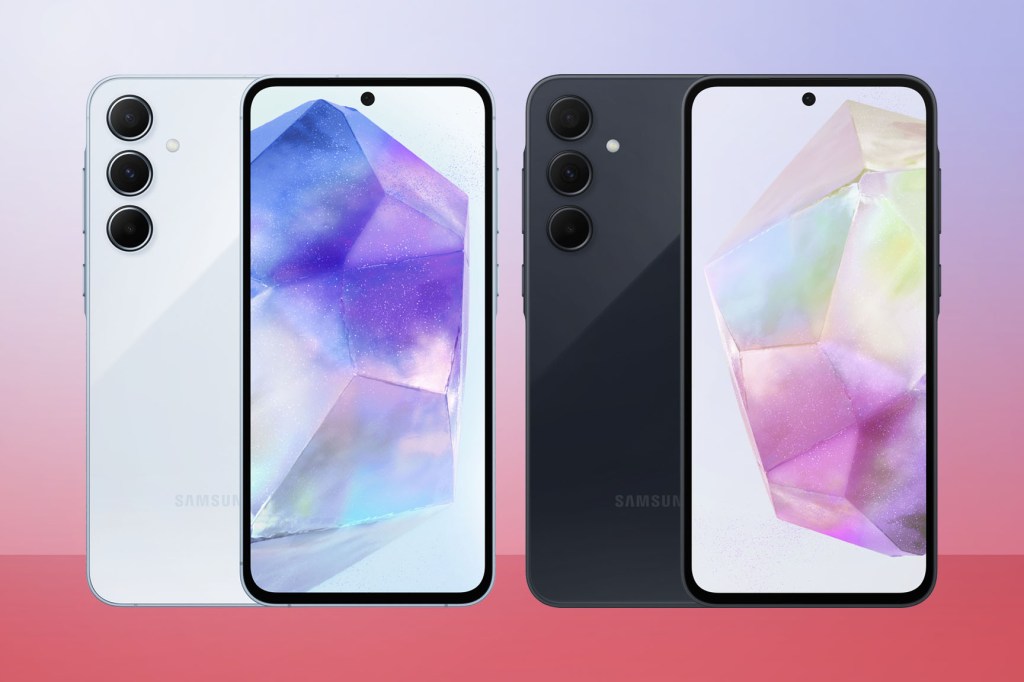
At launch, the Galaxy A55 will set you back £439/€480 for the 8GB+128GB version, if you buy direct from Samsung. A Galaxy A35 with the same memory and storage will cost £339/€379. That’s a big difference – but it’s one I think might be worth paying if you want a mid-range phone that’ll go the distance.
A more powerful processor should mean the Galaxy A55 will stay responsive after a few Android version upgrades (Samsung says you can expect four), and I expect the metal frame to be better at withstanding knocks and bumps. A higher pixel count ultrawide camera is nice, but I don’t think it’ll make a massive difference in daily use, though.



